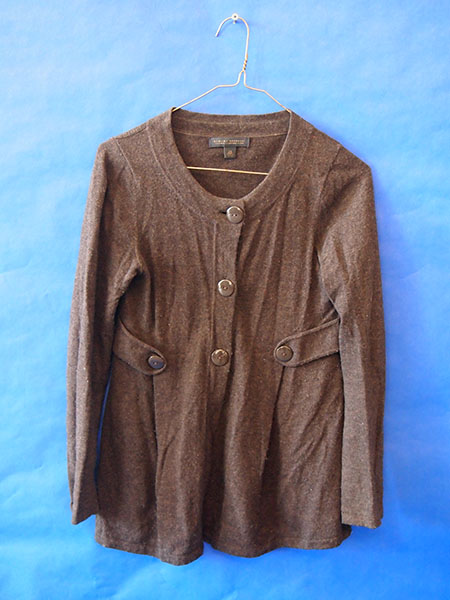![]() body | color | collections | commodity | cube | document | fabric | fetish | gender | glass | home | identity | living | machine | metal | minimal | mobility | narrative | olfactory | organic |
body | color | collections | commodity | cube | document | fabric | fetish | gender | glass | home | identity | living | machine | metal | minimal | mobility | narrative | olfactory | organic |
![]() pain | paper | plastic | plugs | power | protective | rectangular | ritual | round | sound | souvenir | spiritual | style | text-based | time | tool | touch | uniform | value | visual | warm | wood
pain | paper | plastic | plugs | power | protective | rectangular | ritual | round | sound | souvenir | spiritual | style | text-based | time | tool | touch | uniform | value | visual | warm | wood
| Clothing: Brown Cardigan with Buttons | |||
Narrative: Banana Republic Brown cardigan with buttons Given to me from my sister for my birthday in 2009. Made of wool from sheep, with a process that consists of: shearing; grading and sorting; grading and scouring; carding; spinning; weaving; and finishing. All of the byproducts are reused to make different grades of wool. Lanaset dyes are sold by several dye suppliers, including Paradise Fibers and PRO Chemical and Dye under their name of Sabraset. They are also sold under the brand name Telana. They are manufactured by Huntsman Textile Effects, which purchased the global Textile Effects business of Ciba Specialty Chemicals Inc. in 2006. They are acid dyes. Given to me as a gift from my father. Made of wool from sheep, with a process that consists of: shearing; grading and sorting; grading and scouring; carding; spinning; weaving; and finishing. All of the byproducts are reused to make different grades of wool. Lanaset dyes are sold by several dye suppliers, including Paradise Fibers and PRO Chemical and Dye under their name of Sabraset. They are also sold under the brand name Telana. They are manufactured by Huntsman Textile Effects, which purchased the global Textile Effects business of Ciba Specialty Chemicals Inc. in 2006. They are acid dyes. Actually a generic name to a class of polymers called alphaic polymers. Nylon is a synthetic fiber of a class of synthetic polymers developed in early to mid 1900’s. It was the world’s true first synthetic fiber. It is formally attributed to DuPont and Dr. Wallace Carouthers deemed the father of polymers. It is made by repeating bonds and is frequently referred to as a polymide. Nylon fibers specifically are made in a process known as “melt spinning”; syrupy polymer (adipic acid and hexamethylene diamine) solution produced then extruded through a spinneret. When fiber strings emerge they are cooled by air and stretched over rollers to stabilize molecular chains and strengthen the fibers. It was intended to replace silk and substituted for it in WWII including parachutes, flak vests, and vehicle parts including tires and that initiative enhanced speed of research and development. Currently joins rank with polyester in inexpensive mass manufacturing of goods – in 2010 & 2011 the global consumption of nylon was 4 Billion tons annually in filament yarn as well as fibers.
|
 |
||
![]()
